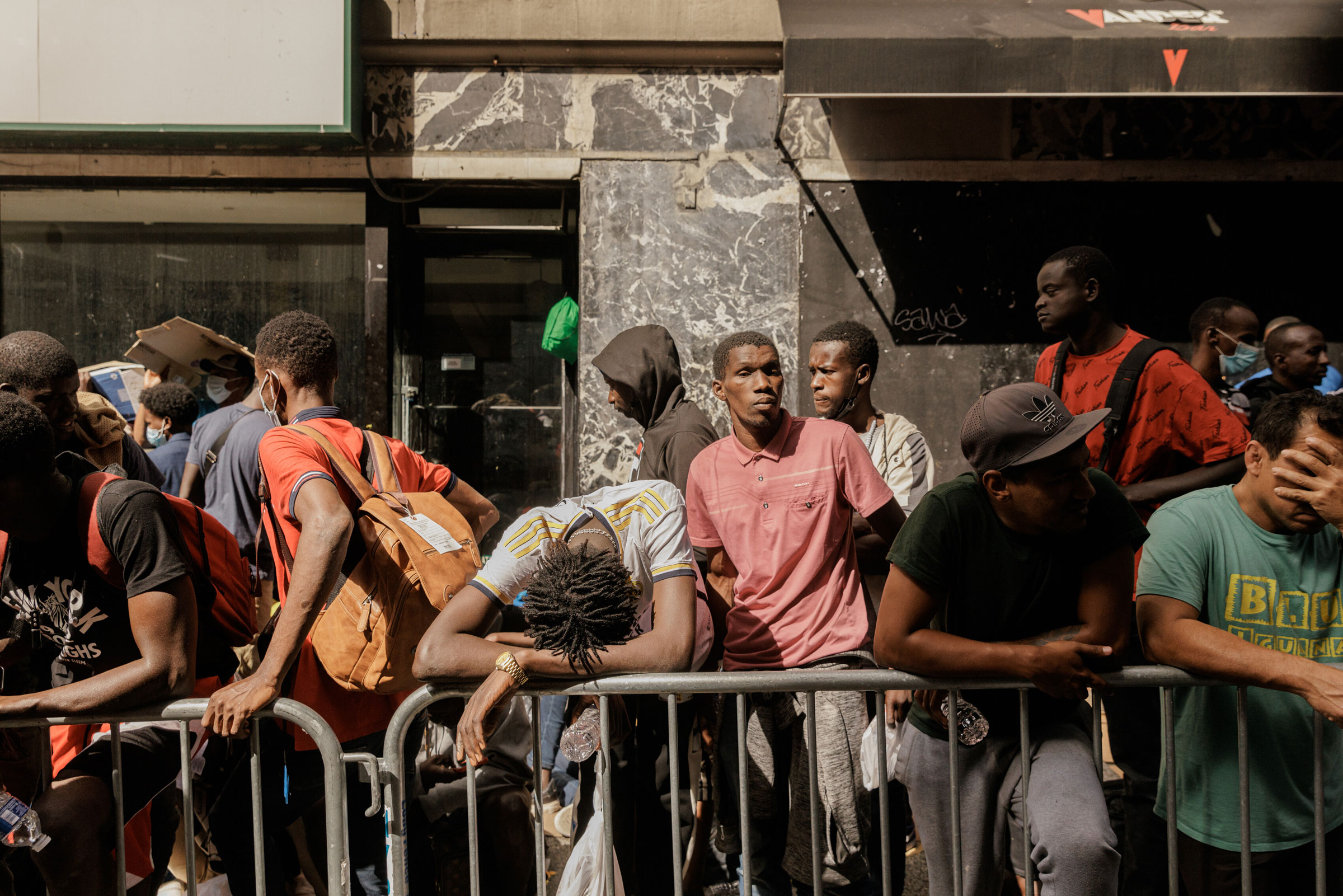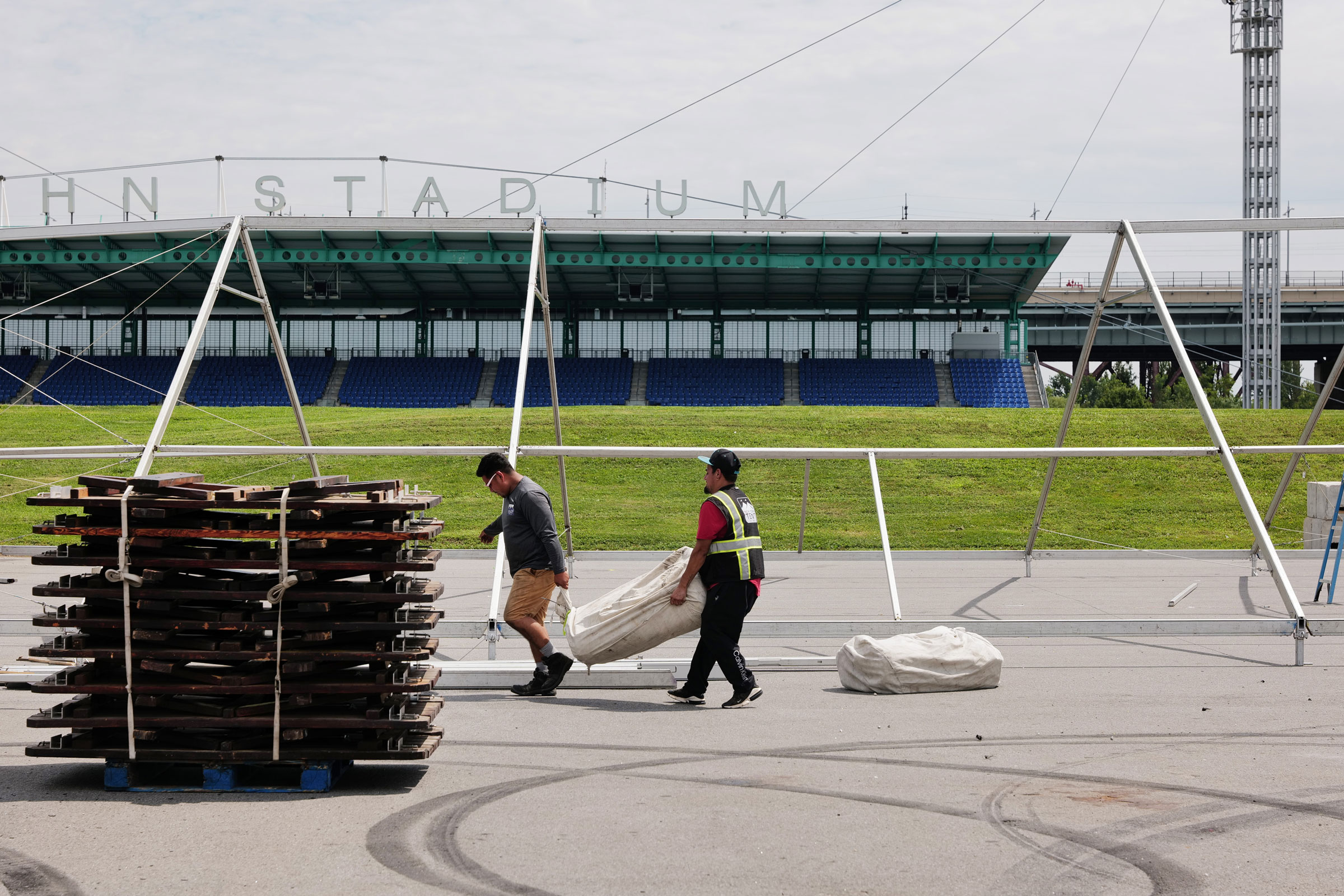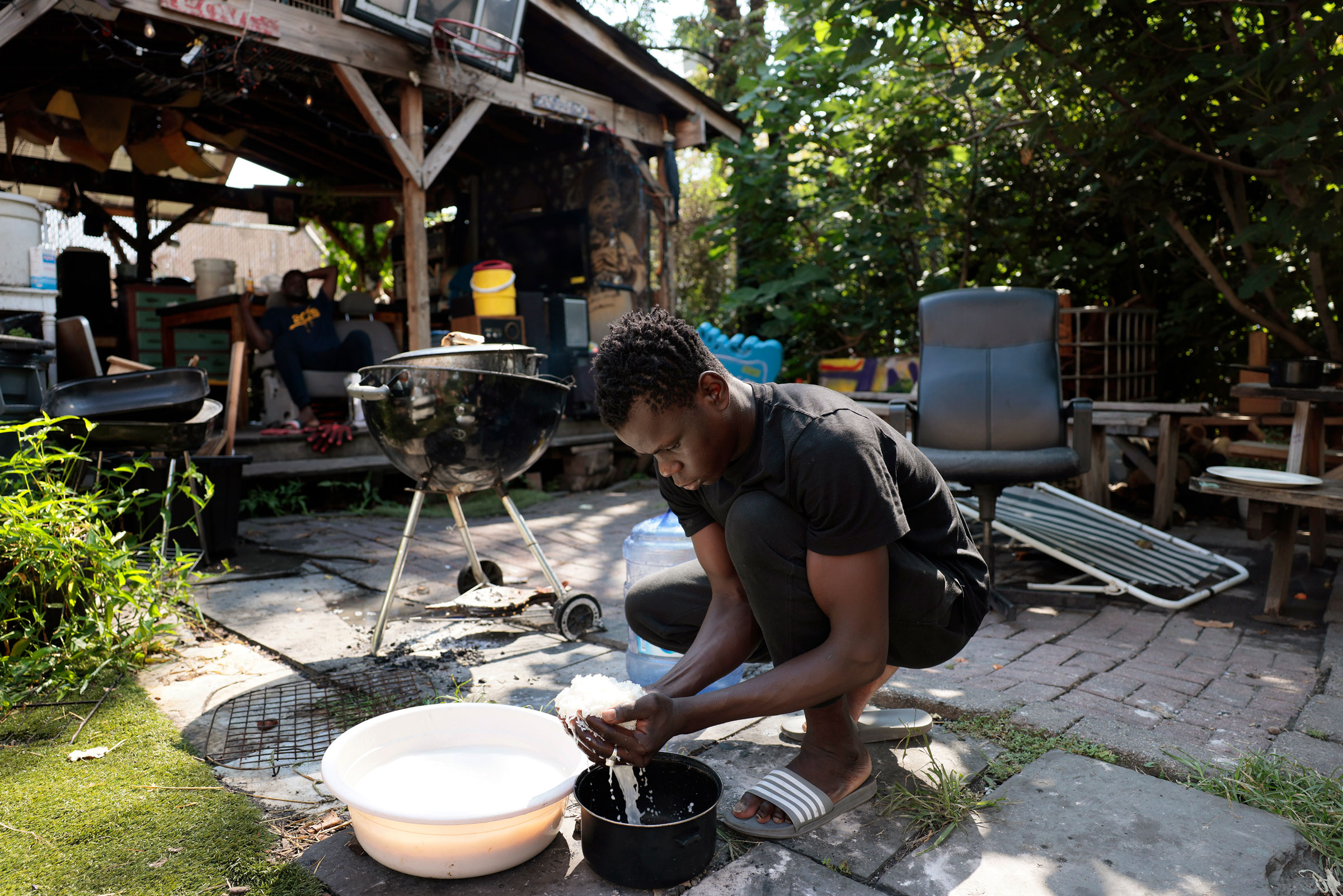
Ali Sayyid, a father of six, tries to quickly change direction when his children hear the sound of an ice cream truck coming down a New York City street. He can’t afford it.
“In Afghanistan, life was good and they were eating everything,” says Sayyid, who asked that his name be changed so he does not lose his family’s placement at the Roosevelt Hotel in midtown Manhattan.
Sayyid was a civil engineer in Afghanistan in 2021. But after the Taliban’s takeover, he fled—first to Brazil and then across the Southern border into the U.S. He is among more than 100,000 migrants that have arrived in New York City over the last year. Many are desperate but unable to work legally—and trapped in the city’s overcrowded temporary housing in the meantime. Nearly 60,000 remain in the city’s care, according to the mayor's office.
More From TIME
“Since the spring of 2022, our city has borne the brunt of a national crisis—providing shelter and care for a population greater than the entire city of Albany,” New York City Mayor Eric Adams said in an August 24 statement. New York City has a right-to-shelter law, which means officials cannot legally turn away anyone seeking shelter. The city and state have been fighting in court over the best way to house the influx of migrants. The city of New York sued 30 New York counties for issuing emergency executive orders meant to ban the city for arranging asylum seekers to stay in private hotels like the Roosevelt, which remains a designated arrival center in addition to functioning as a shelter. Last month, dozens of asylum seekers slept outside the Roosevelt Hotel hoping to secure a room like Sayyid and his family.

In response to traditional shelters reaching near-capacity in early June, the city created 206 emergency shelters, including respite centers in school gymnasiums and parking lots. These facilities were originally intended to house migrants only for a few days, so they don’t face the same kind of regulation that shelters do. Many are bare-bones spaces providing little more than a cot to sleep and a few meals.
Advocates have slammed the city for some of these facilities lacking access to showers and serving frozen meals to residents. “The respite centers are at the bottom of the barrel… By announcing the emergency situation they bypassed all the laws in the last 40 years that have been put in place,” says Mammad Mahmoodi, co-founder of EV Loves NYC, a nonprofit focused on food insecurity in New York City. Rules around cots being spaced out and having an appropriate ratio of bathrooms per people can be overlooked, he says: “All of that went out of the window."
When asked about conditions at the respite centers, the mayor’s office stressed that this is an emergency situation and noted that all sites now have viable shower options. A spokesperson with the office says the city considers respite centers to function as waiting rooms and not long-term stays. But many asylum seekers don’t see a clear path to permanent housing.
As the migrant housing crisis grows in New York City, asylum-seekers, advocates, and New York politicians are increasingly focused on a related problem: the slow, kludgy process for getting federal work permits. Allowing for speedy work authorization so migrants can better support themselves, the thinking goes, could relieve some of the pressure on temporary housing. “We need the federal government to allow asylum seekers to work, so they can provide for themselves and their families,” said Adams. Governor Kathy Hochul echoed his remarks in a public address last week—asking in particular to expedite work permits: “Let them work,” she said. The Biden Administration hit back earlier this week, recommending that the city and state improve data collection at intake, communication around needing to apply for work authorization and asylum, and ensuring case management and legal services are available at multiple shelter sites.

Sayyid and his family filed for asylum two weeks ago, but migrants need to wait 180 days after the application date before qualifying for a work permit. Work permit requests are taking about two months to process, according to a Department of Homeland Security (DHS) official. The agency notes that the 180-day waiting period is written into statute, so the agency does not have control over it—Congress does.
While some migrants resort to working cash jobs in construction or delivery, Sayyid says he won’t consider that; if the police find out, it could tank his family’s asylum case. “I will not put my family at risk,” he says. In the meantime, money is tight. He says the city rejected his application for cash assistance two months ago and that it has only provided him with Medicaid and the shelter placement since he first arrived. “It's really time for the state and federal governments to take a more active role and to help people get work authorization,” says Kathryn Kliff, a staff attorney with the Legal Aid Society. “Without work authorization, you might get exploited or not have a steady income… They don’t feel like they have the protection to be able to work in a more above-ground job.”
Sayyid is just one of thousands of migrants stuck in temporary housing without the ability to legally earn money towards a more permanent setup. Dozens of migrant men who crossed the Southern border to flee dire economic crises in Mauritania and Senegal ran to a street corner in Brooklyn on Sunday afternoon to get free food from a mutual aid group in the Clinton Hill and Fort Greene neighborhoods. They include former mechanics, electricians, and construction workers struggling to find jobs and currently living at one of the city’s respite centers on Hall Street, near the Brooklyn Navy Yard. “It’s a miracle that any of us are alive. It’s impossible to live there. No one would risk their lives otherwise,” Mohamad Sow, a man from Mauritania at the respite center, says in French. Sow asked for his name to be changed for fear that it could negatively affect his ability to stay in the U.S. (Members of the mutual aid group handing out food translated from French to English.)
The men are all worried about employment, as well as getting kicked out of their current dwelling because of a requirement for all single adult migrants to reapply for shelter every 60 days. Mayor Adams established the rule to provide more room for families with children, but these men don’t know where they’ll be able to stay next. Local bureaucracy has made it harder to get a city ID that would help migrants open bank accounts, access city services, and secure jobs—which would in turn help them get on the path to moving out of temporary housing. The migrants near Brooklyn Navy Yard say government forms ask for a residential address to get an IDNYC card, but the respite center won’t let them use the address where it is located. Some have had to use addresses of churches or mosques instead. But just the city ID still isn’t enough: The city notes that the IDNYC card can be used as proof of identity, but employers often require additional proof of work authorization. An official with the mayor’s office said they would look into the issue.

Amid the increasingly dire situation, a loose web of nonprofits and aid groups has developed to help migrants with everything from basic necessities like bedding, socks, and hygiene kits, to legal advice, to food. EV Loves NYC, the food insecurity nonprofit, says it delivers about 2,000 meals on Sundays to shelters and respite centers across the city. At the Sixth Street Community Center—the group’s home base—slabs of Hebrew text from when the building was a synagogue peek out behind murals of leftist leaders. “Hot chicken coming through,” yells one volunteer, as another packs rice into boxes. On Aug. 22, there’s an Indo-Chinese meal: coconut curry meatballs. A couple days later, the menu is fragrant rosemary chicken and stuffed grape leaves. There’s always a vegan option. Sayyid, the Afghan father of six, relies on the group for halal chicken and meat meals.
Respite centers also often lack key supports like caseworkers. Caseworkers are at humanitarian relief or arrival centers but not at respite centers; they are also prioritizing families, according to an official with the mayor’s office. Organizer Power Malu from the aid group Artists Athletes Activists sets up at a church in midtown Manhattan every Friday where he has helped gather volunteers to address the gaps. Among them are city employees helping in their free time, Legal Aid attorneys, and bilingual English teachers.
But the issues of work and housing persist. On a recent Friday afternoon, three other young men from Mauritania wait at the church to connect with a volunteer attorney to talk about legal pathways to work and live in the U.S. Elkhalil Mohamed Selma, 24, says he has been staying at a respite center for almost two months—one that was on the news for not having functioning showers. “The security talks with us like we are animals; says we are strangers in this country,” Selma says. Every day, he and the other two men go try and find work; every day, they come back without a job.
More Must-Reads from TIME
- Cybersecurity Experts Are Sounding the Alarm on DOGE
- Meet the 2025 Women of the Year
- The Harsh Truth About Disability Inclusion
- Why Do More Young Adults Have Cancer?
- Colman Domingo Leads With Radical Love
- How to Get Better at Doing Things Alone
- Michelle Zauner Stares Down the Darkness
Write to Sanya Mansoor at sanya.mansoor@time.com